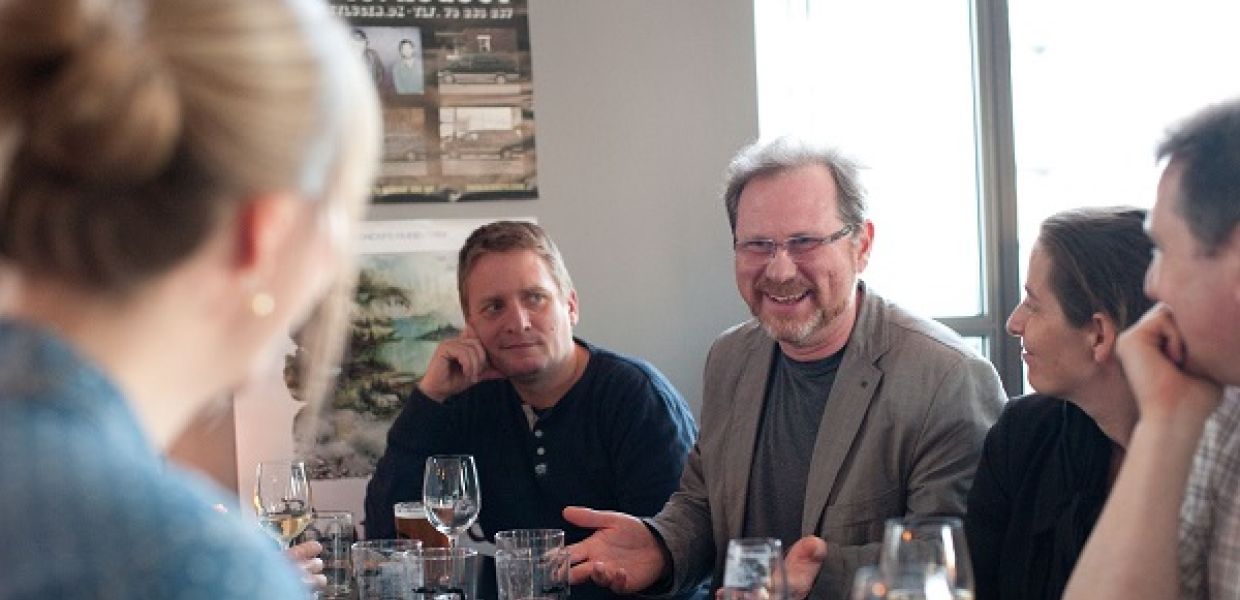Kick-starting the development of the impact toolkit

- Title:
- Resident impact expert, Prof Simon Tanner, entertaining us with stories of impact
- Creator:
- Harry Verwayen
- Copyright:
- CC BY-SA
Impact is a hot topic for Europeana this year! It is embedded in every element of our Business Plan, and became the focus of a new Task Force. Our goal, and it is a tough one, is to make it easier for Cultural Heritage Institutions to understand and express the impact of their activities.
Step 1. Engaging with people interested in impact
In March, we dipped our toe in the water and quietly launched a beta website that started the process of engaging with people interested in impact within the cultural heritage sector across the world. This effort is supported by our international partners such as the DPLA, and Trove.
We kick-started April with an impact filled trip to Copenhagen. There, we ran a workshop for Merete Sanderhoff and her colleagues helping them to explore the impact of SMK Open, their far reaching project aiming at making more of their collections available online. Whilst still in the early stages of this project, they are considering the next steps, such as taking baseline measurements to demonstrate their impact of SMK Open in the years to come.
Step 2. Identifying the components of an impact toolkit
In the inspiring surrounds of SMK, we spent a day with the Impact Task Force exploring what an impact toolkit meant to them. We looked at what the use cases were - when would an impact toolkit be useful, and how would it help?
We learned that the expectations of a ‘toolkit’ were broader than we had originally expected. It involves more than a method, and the means of following that method, and requires canvases or softwares to guide you through undertaking an impact assessment. The Impact Task Force identified a number of components that would help not only undertake impact assessment, but also convince stakeholders and decision makers that assessing impact is an important activity.
Step 3. What are we working on in May?
We have created an internal impact team to work with the Task Force and iteratively develop the components of a toolkit that had been requested. In total, there are nine components ranging from the simple (‘a list of impact resources’) to the more complex (‘a methodology for impact design, assessment and narration’). We are also setting up a LinkedIn group as a forum for the growing impact community to share information and experiences.
If you want to know more about our work on impact assessment, or are interested in contributing your expertise please get in touch via impact@europeana.eu

